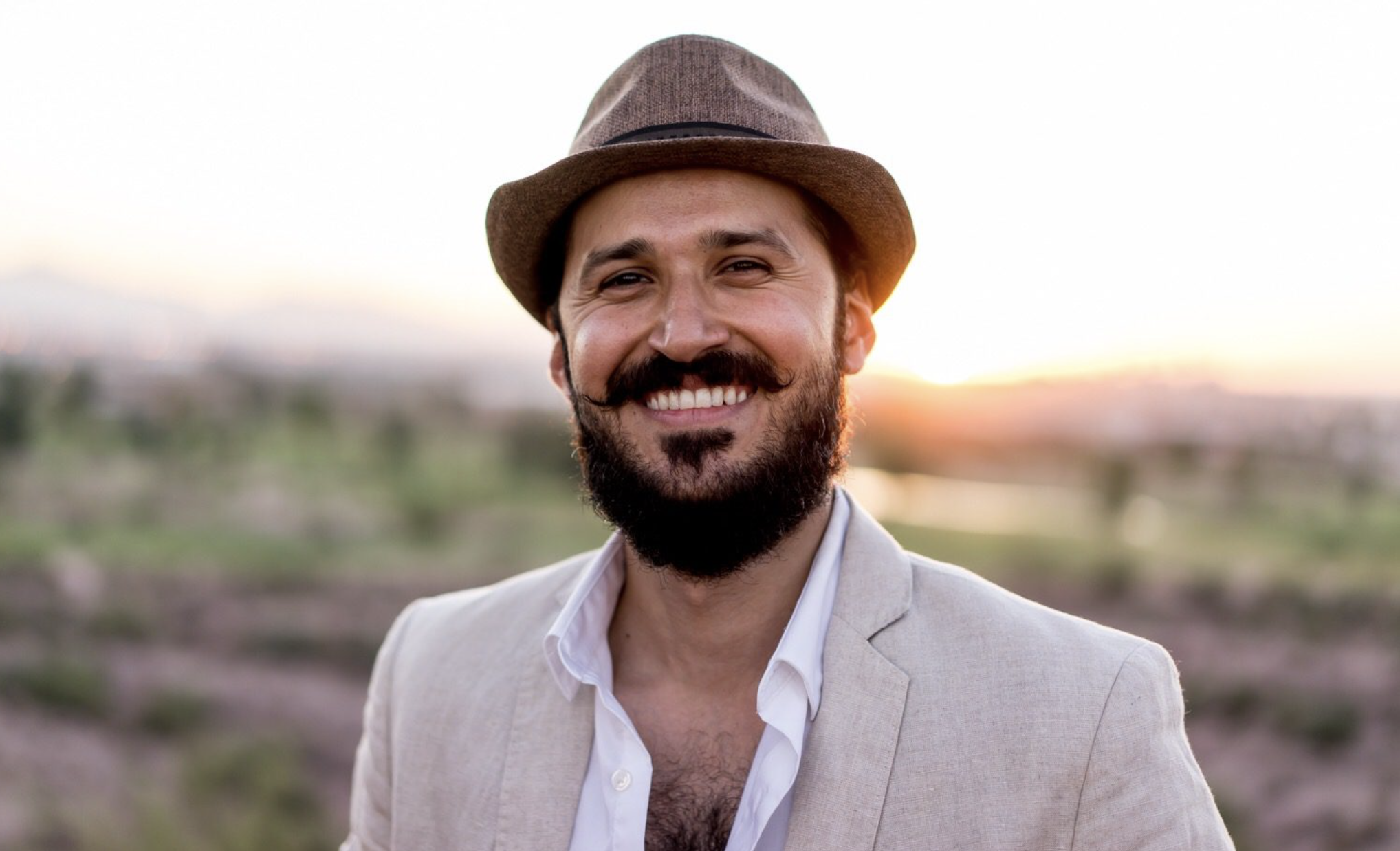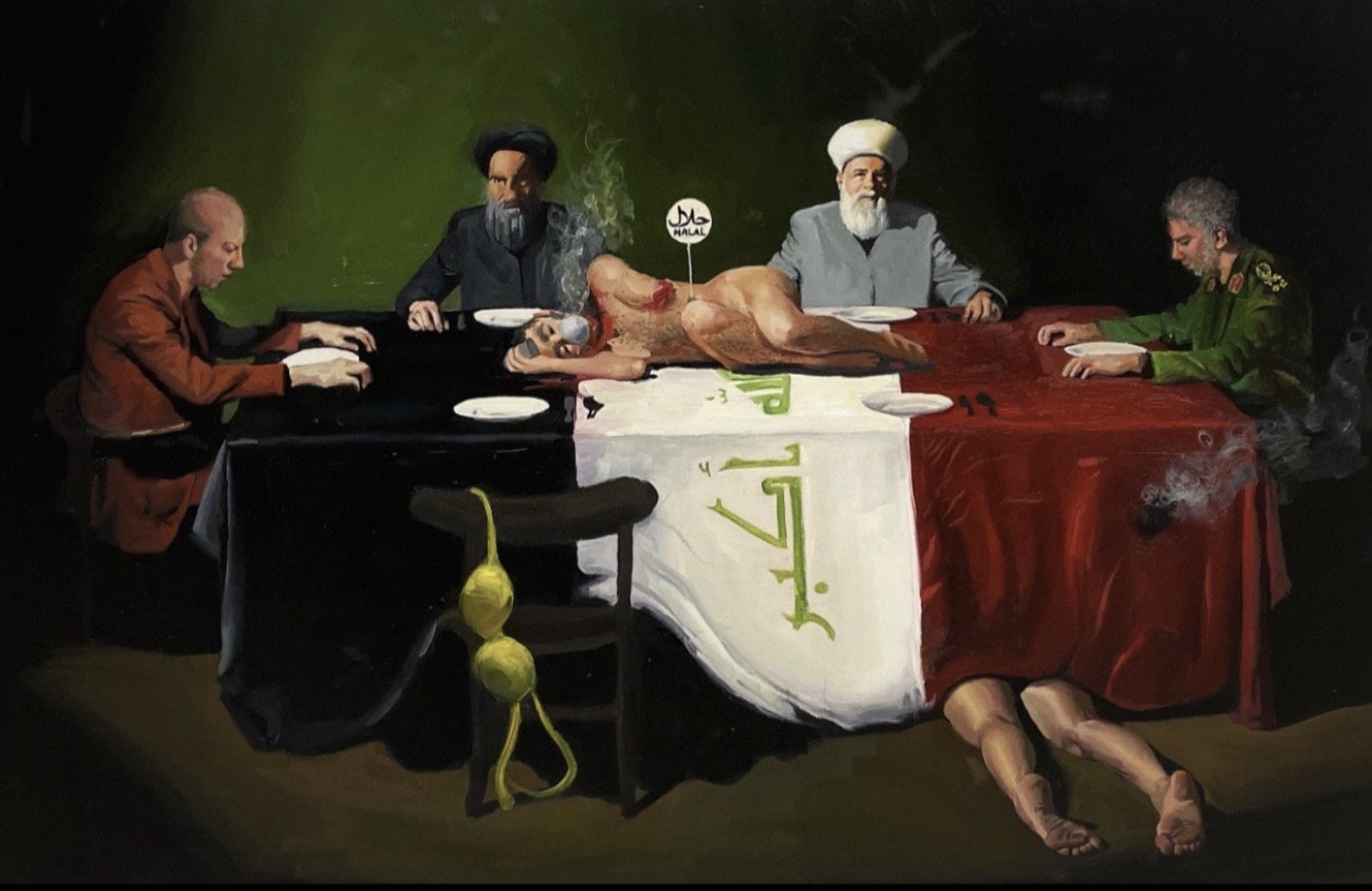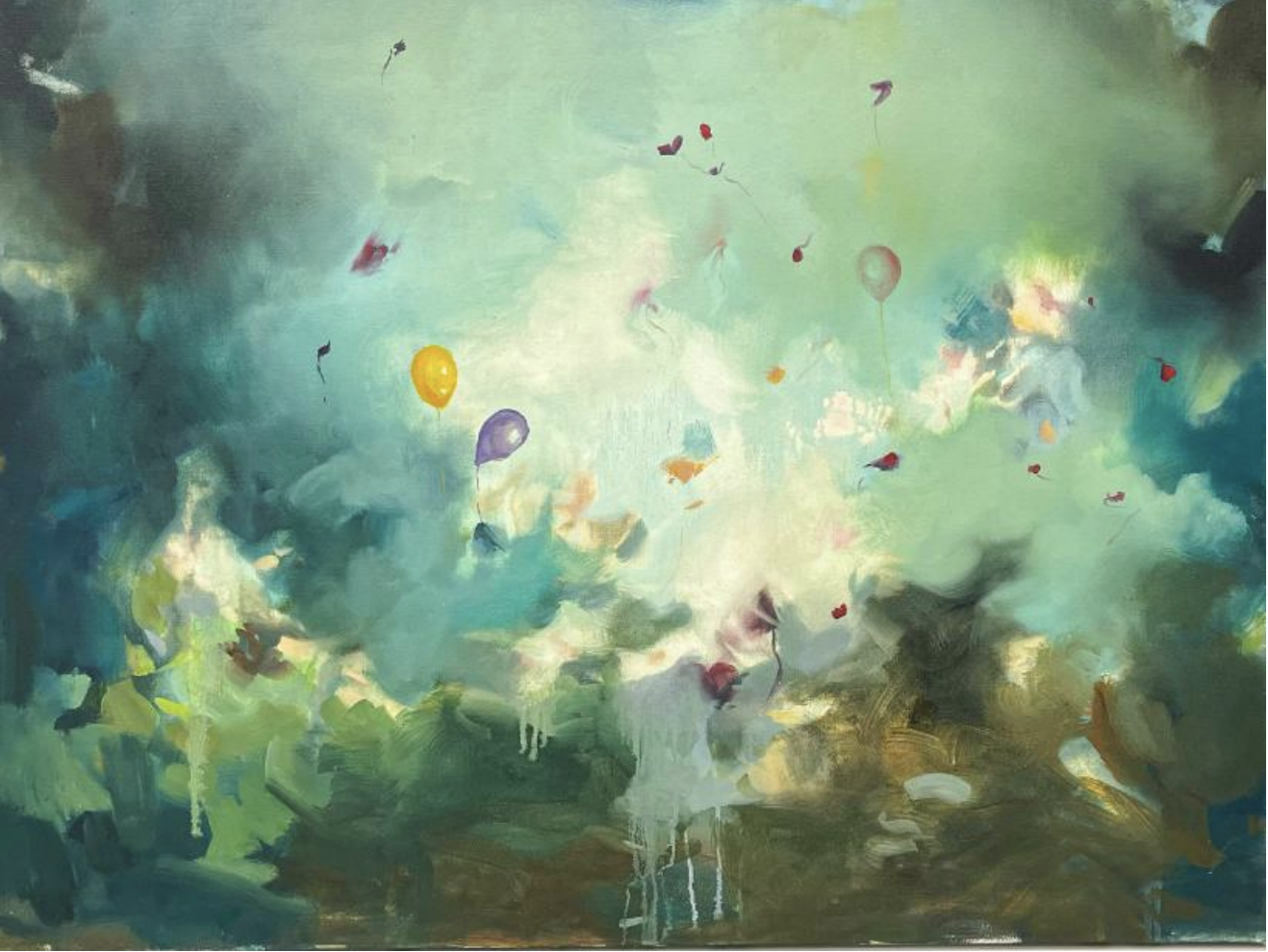How Alum Bassim Al-Shaker Pursued Painting in Wartime

Bassim Al-Shaker. Photo by Sean Deckert. Image courtesy of Borderless magazine
Bassim Al-Shaker. Photo by Sean Deckert. Image courtesy of Borderless magazine
by Nadya Kelly (MA 2023)
When asked to describe who he is as a person and who he is as an artist, School of the Art Institute of Chicago (SAIC) alum Bassim Al-Shaker (MFA 2021) answers both questions the same way. “I am a painter,” he says. “There is no question.”
He is most well-known for his oil paintings depicting life in his hometown of Baghdad. In Halal, members of the Shia and Sunni clergy, a politician for the Iraqi government, and Qassem Soleimani, the ex-commander of a division in the Islamic Revolutionary Guard Corps, sit around a human body placed on a dinner table. Much of Al-Shaker’s work seeks to bring awareness to government corruption and how it leads to the death of its citizens.

Halal, 2019, oil on canvas, 24 x 20 inches. Image courtesy of the artist
Halal, 2019, oil on canvas, 24 x 20 inches. Image courtesy of the artist
While growing up in Baghdad, Al-Shaker struggled to find other practicing artists, visiting the few local art galleries in his area to make connections. Once the Iraq War started in 2003, it became even harder to practice his art. His arts high school was completely destroyed in the fighting. Later, Al-Shaker attracted negative attention from loyalists of Iraq’s Mahdi Army militia after they saw his sketches of the Venus de Milo—a nude female figure—which were practice for his university entrance exam. Even though he was beaten for these works, Al-Shaker still went on to attend the University of Baghdad College of Fine Arts and gained a strong figurative painting background.
“There was war, armies, guns, people dying,” said Al-Shaker. “But you need to keep going around all of these horrible things.”
Eventually, Iraq became too dangerous for Al-Shaker to remain. As the war escalated, he received continued threats from soldiers. He flew from Baghdad to Phoenix, Arizona, after the director of the Arizona State University (ASU) Art Museum asked him to participate in a residency program. Only a few months after arriving in Phoenix, the New York Times reached out to Al-Shaker through a mutual contact and asked to profile him.
“There was war, armies, guns, people dying. But you need to keep going around all of these horrible things.”
“It was crazy. At that time I didn’t know that the New York Times was that big in the United States, so I just did it like any interview in my life,” Al-Shaker recalled. “My English wasn’t that good at the time, so ASU made sure an interpreter was with me at all times.”
Once the Times published their profile of Al-Shaker, he immediately captured the attention of a national audience. Readers of the Times reached out to the painter to show their support, and publications such as Artnet and National Geographic published additional pieces. Lawyers who read Al-Shaker’s profile also reached out, and with their help, Al-Shaker successfully obtained an artist visa, meaning he could stay in the United States permanently.
“When they said yes to me, I still couldn’t really process it,” said Al-Shaker. “I cried. I couldn’t help myself. My life started from there.”
Following his Times profile, Al-Shaker quickly began exhibiting his artwork internationally and enrolled as a graduate student at SAIC. While studying at the School, Al-Shaker learned a plethora of contemporary techniques that he still draws from today. He remembers noticing how much his art had changed after people viewed Human Crumbs at FLXST Contemporary, his first solo show as an SAIC graduate.
“Everyone was surprised. They thought they were going to see figurative painting, but they didn’t see that,” said Al-Shaker. “I went to SAIC because I wanted to change from being an academic artist to an abstract artist.”
Human Crumbs marked a new direction for the artist. One painting in the exhibition, Battlefield, depicts a group of balloons floating upwards through a cloud-like blend of blues, greens, and browns. Some balloons remain intact, some are in the midst of popping, and some drift downwards in small, tattered pieces.

Battlefield, 2021, oil on canvas. 40 x 30 x 1.5 inches. Image courtesy of the artist
Battlefield, 2021, oil on canvas. 40 x 30 x 1.5 inches. Image courtesy of the artist
Since graduating from SAIC in 2021, Al-Shaker has become a rising star in the contemporary art world. He is currently producing a stop-motion documentary set to premiere at documenta, a major contemporary art exhibit in Kassel, Germany, and last year, Al-Shaker showed his art at Zolla/Lieberman Gallery as part of a group show.
“My goal is to keep going,” said Al-Shaker. “Art is my therapy. I want people to see how much I hurt and how much the people in my country hurt. I hope when people see my work, they think, let’s be good people.”■
{{[http://www.saic.edu/news/alums]ALUMS}} {{[http://www.saic.edu/news/artconnectsus]ART CONNECTS US}}
